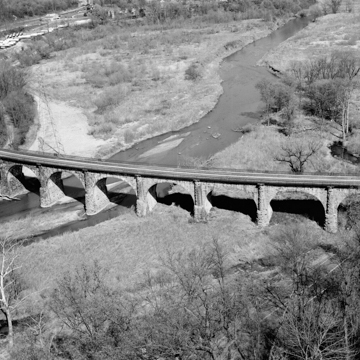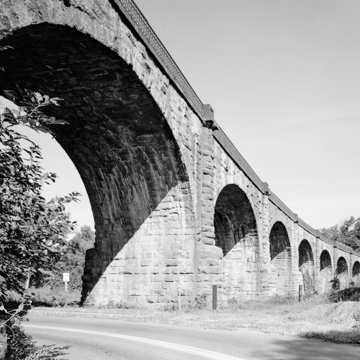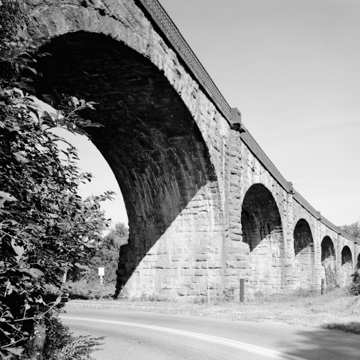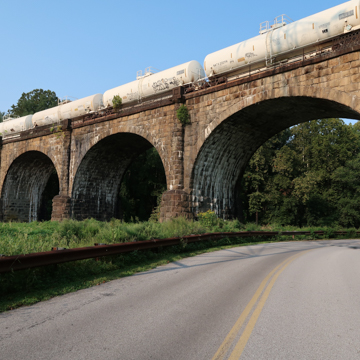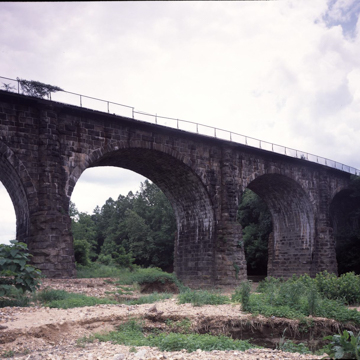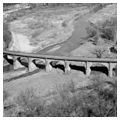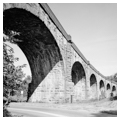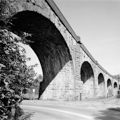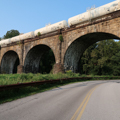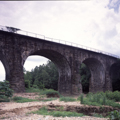Virtually unchanged since its 1835 completion, this viaduct on the Washington branch of the Baltimore and Ohio Railroad (B&O) was the first multispan masonry railroad bridge erected in the United States and the first built on a curving alignment. Benjamin Henry Latrobe Jr., an engineer with the B&O and son and namesake of the famed architect, designed the massive viaduct, which had to be high enough to avoid flooding of the Patapsco River while also accommodating a 4-degree curve.
To do so, he laid out the piers on radial lines, resulting in a wedge shape with wider sides facing the outside curve of the viaduct. The 612-foot-long viaduct (704 feet including the approaches) has 8 elliptical arches with pilasters between them. The viaduct rises 59 feet from the water level to the base of the cast-iron decorative rail and has a 26-foot-wide deck that accommodates a double track and a 4-foot-wide pedestrian walkway. It is built of 63,000 tons of rough-dressed granite ashlar obtained from nearby quarries on the Patapsco River set in cement mortar.
Officially named for Philip E. Thomas, the first president of the railroad (1827–1836), the viaduct was nicknamed Latrobe’s Folly because of public doubts that it would even be able to support its own weight. Now a National Historic Landmark and a National Historical Civil Engineering Landmark, it has defied all expectations, remaining in service to the present. Its smaller predecessor, the Carrollton Viaduct located over Gwynn’s Falls in Baltimore, also shares this distinction.
References
Dilts, James D. The Great Road: The Building of the Baltimore & Ohio, The Nation’s First Railroad, 1828–1853. Stanford, CA: Stanford University Press, 1993.
“Baltimore & Ohio Railroad: Thomas Viaduct.” HAER No. MD-3, Historic American Engineering Record, 1984. Prints and Photographs Division, Library of Congress, Washington, D.C.


